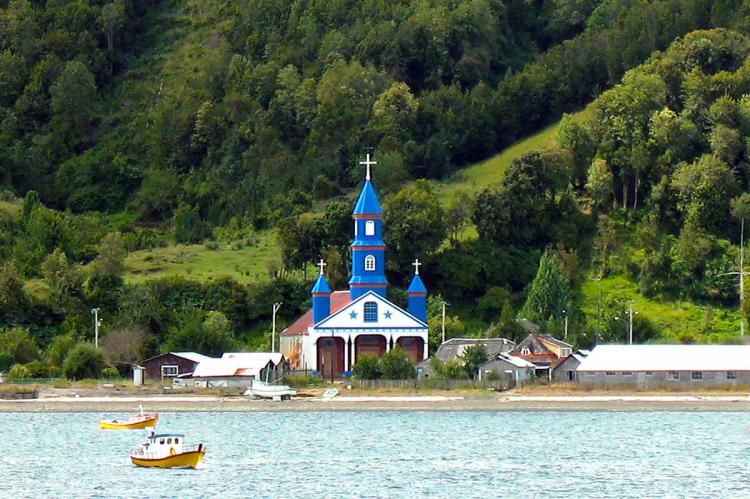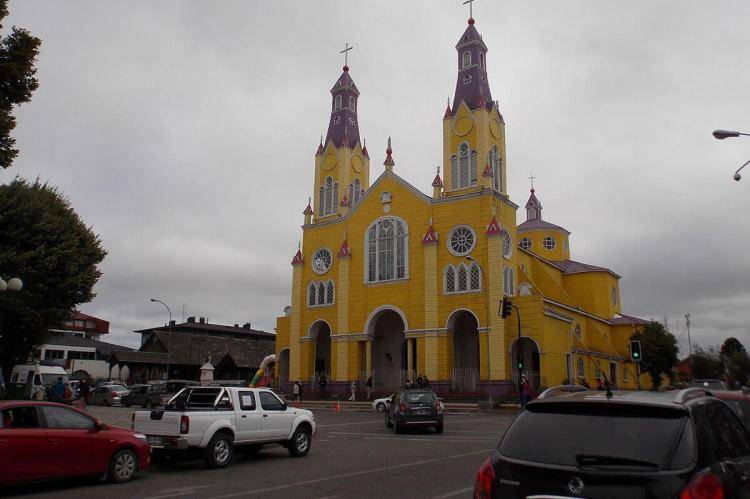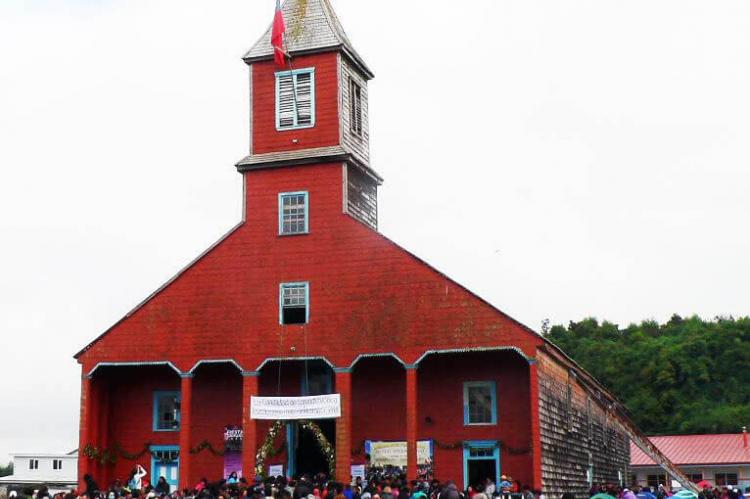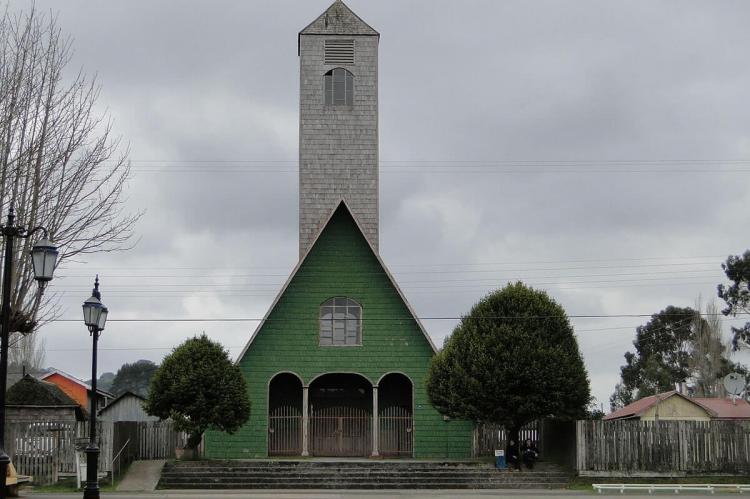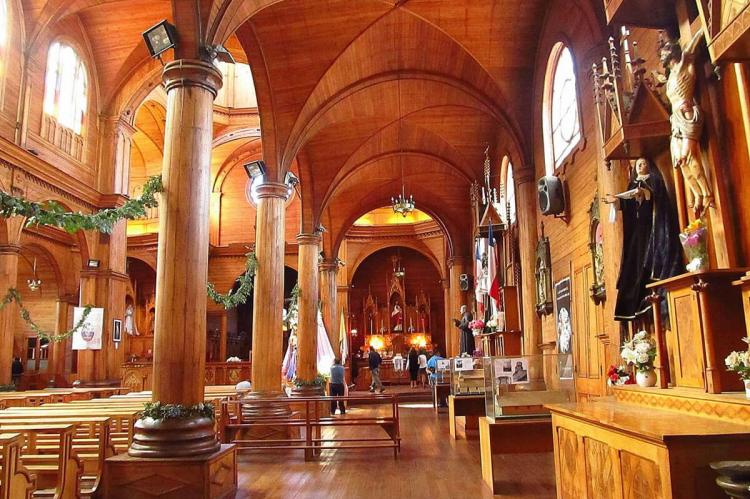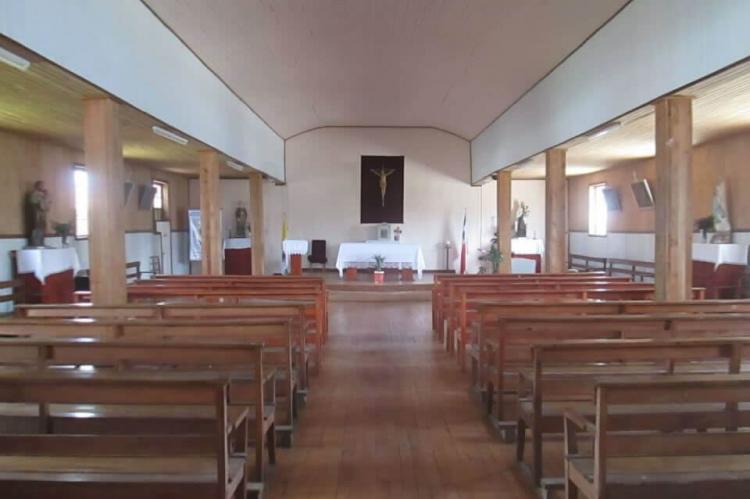The Churches of Chiloé: Enduring Sanctuaries of Faith, Culture, and Architectural Ingenuity
Amidst the breathtaking natural splendor of the Chiloé Archipelago, a remarkable ensemble of churches stands as a testament to the harmonious fusion of Indigenous traditions and Spanish colonial influences—the Churches of Chiloé number around 70 structures scattered across the islands.
Chiloé's Sacred Wonders: Preserving a Legacy of Faith, Culture, and Architectural Ingenuity
Amidst the breathtaking natural splendor of the Chiloé Archipelago, a remarkable ensemble of churches stands as a testament to the harmonious fusion of indigenous traditions and Spanish colonial influences. The Churches of Chiloé, numbering around 70 structures scattered across the islands, are more than mere religious edifices; they are living embodiments of the region's rich cultural heritage, architectural ingenuity, and unwavering faith – a fusion of spirituality and artistic expression that has endured for centuries.
The Jesuit "Circular Mission": Planting the Seeds of Evangelization
The origins of the Churches of Chiloé can be traced back to the 17th century when a pivotal event known as the "Circular Mission" laid the foundation for the region's rich religious and architectural heritage. In 1608, a group of Jesuit missionaries led by Father Melchor Venegas embarked on an ambitious endeavor to evangelize the indigenous communities of Chiloé and the surrounding areas.
The "Circular Mission" derived its name from the circular route taken by the Jesuits as they traveled from village to village, establishing temporary chapels and preaching the gospel to the local populations. This far-reaching initiative not only aimed to spread Christianity but also sought to integrate the indigenous practices and beliefs into the new faith, fostering a unique fusion of cultures that would shape the distinct character of the Churches of Chiloé.
Through their interactions with the native communities, the Jesuit missionaries recognized the deep-rooted spiritual traditions and reverence for nature that permeated the Chilote way of life. Rather than imposing a rigid European religious model, they embraced local customs and incorporated indigenous symbolism and artistic expression elements into their teachings and architectural designs.
Franciscan Stewardship: Preserving and Advancing the Architectural Vision
As the Franciscan order assumed the mantle of religious leadership in subsequent centuries, they became the guardians of this architectural legacy, ensuring these remarkable structures' preservation and continued evolution of these remarkable structures. Through the collaborative efforts of local communities and the skilled hands of Chilote artisans, the churches grew in number and complexity, each a testament to the ingenuity, devotion, and resilience of the island's inhabitants.
Architectural Ingenuity: A Harmonious Blend of Cultures
The Churches of Chiloé stand as shining examples of the mestizo culture that flourished in the region during the Spanish colonial era. Diverging from classical Spanish colonial architecture, these churches are entirely constructed from native timber, utilizing wood shingles extensively. The fusion of Spanish Jesuit and Indigenous aesthetics is evident in the intricate carvings, vibrant colors, and intricate designs that adorn their facades and interiors, creating a harmonious blend of cultural influences that reflects the unique identity of the Chilote people.
Masterpieces of Wooden Craftsmanship
Beyond their cultural significance, the Churches of Chiloé are also celebrated for their remarkable craftsmanship in working with wood. The local artisans, drawing upon centuries of expertise passed down through generations, have created architectural masterpieces that showcase the versatility and beauty of this natural material. From the intricate carvings that adorn the altars and pulpits to the towering bell towers and meticulously crafted roof structures, each element is a testament to the artisans' skill and dedication.
Guardians of History and Faith
Integral to the Catholic Church's Diocese of Ancud, the Churches of Chiloé have served as spiritual havens for generations of Chilote faithful. Their administration and preservation are entrusted to the Bishop of Ancud, parish priests, and the Friends of the Churches of Chiloé Foundation, a private entity dedicated to safeguarding these architectural treasures. Despite the challenges posed by weather, wood-eating insects, earthquakes, and the ever-present threat of fire, ongoing conservation efforts by local communities, government agencies, and international organizations ensure that these sacred spaces remain guardians of Chiloé's history and faith.
UNESCO's Recognition: A Testament to Global Significance
In 2000, UNESCO bestowed upon the Churches of Chiloé the prestigious status of a World Heritage Site, acknowledging their cultural and historical significance on a global scale. The designation encompasses 16 churches distributed across the archipelago, each contributing a unique narrative to Chiloé's religious and architectural heritage and serving as a testament to the remarkable ingenuity and resilience of the Chilote people.
Notable Architectural Gems
Among the 16 churches recognized by UNESCO, several stand out as architectural gems, each with its distinct charm and historical significance:
- Iglesia San Francisco de Castro, Castro: This is the oldest church, dating back to the 17th century. It is adorned with vibrant colors and intricate carvings that reflect the fusion of Spanish and Indigenous artistic traditions.
- Iglesia de Nuestra Señora de Gracia, Rilán: Renowned for its unique boat-shaped structure, resembling an inverted ship hull, this church houses a stunning array of religious artifacts and statues, showcasing the skillful craftsmanship of Chilote artisans.
- Iglesia Santa María de Loreto, Achao: This is the oldest surviving wooden church in Chiloé, dating back to 1730. It displays a captivating mix of Baroque and Chilote architectural elements, creating a harmonious blend of styles that reflects the region's cultural diversity.
Preserving a Living Heritage
Recognizing the significance of these architectural treasures, numerous initiatives have been launched to ensure their preservation and promotion. Local communities play a vital role in this endeavor, organizing cultural events, educational programs, and workshops to foster a deeper appreciation for the Churches of Chiloé and their enduring legacy.
Visitors to the archipelago are encouraged to explore these sacred spaces, not only to admire their architectural beauty but also to gain insight into the rich tapestry of traditions and beliefs that have shaped the Chilote people's way of life for generations. From participating in religious ceremonies and cultural festivals to witnessing the intricate restoration processes, visiting the Churches of Chiloé offers a truly immersive experience that celebrates the harmonious coexistence of faith, culture, and artistic expression.
Conclusion
The Churches of Chiloé stand as enduring sanctuaries of faith, culture, and architectural ingenuity, their enduring presence a testament to the resilience and ingenuity of the Chilote people. These remarkable structures, inscribed on the UNESCO World Heritage list, are not merely places of worship; they are living embodiments of a rich cultural heritage that has withstood the test of time. As guardians of Chiloé's history and spiritual traditions, these churches invite visitors to embark on a journey of discovery, where the fusion of Indigenous and Spanish colonial influences is celebrated through stunning architectural forms, intricate woodcarvings, and vibrant artistic expressions. Truly, the Churches of Chiloé stand as enduring testaments to the power of human creativity, faith, and the indomitable spirit of a people deeply rooted in their land and traditions.
UNESCO Recognition
The sixteen churches deemed outstanding examples and registered as part of the World Heritage Site are concentrated in the archipelago's central-eastern zone.
- Iglesia San Francisco de Quinchao, Quinchao
- Iglesia San Francisco de Castro, Castro
- Iglesia de Nuestra Señora de Gracia, Rilán
- Iglesia de Señora de Gracia de Nercón, Nercón
- Iglesia de Aldachildo or Iglesia de Jesús Nazareno, Aldachildo
- Iglesia San Antonio de Padua de Ichuac, Ichuac
- Iglesia San Francisco de Detif, Detif
- Iglesia San Ignacio de Loyola de Vilupulli, Vilupulli
- Iglesia San Carlos de Chonchi, Chonchi
- Iglesia Santa Rosa de Lima de Tenaún, Tenaún
- Iglesia San Francisco de Colo, Colo
- Iglesia San Juan Bautista de San Juan, San Juan
- Iglesia Nuestra Señora de los Dolores de Dalcahue, Dalcahue
- Iglesia San Antonio de Chellín, Chellín
- Iglesia Jesus Nazareno de Caguach, Caguach
- Iglesia Santa María de Loreto de Achao, Achao
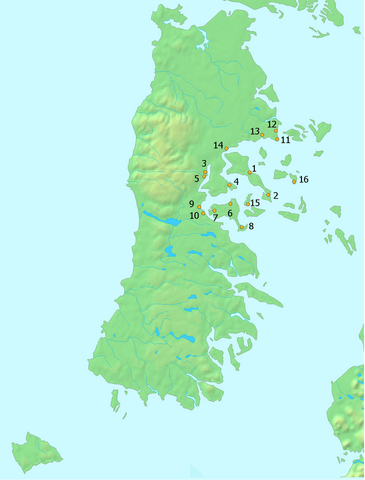
Map depicting the locations of the 16 UNESCO-recognized churches of Chiloe.
